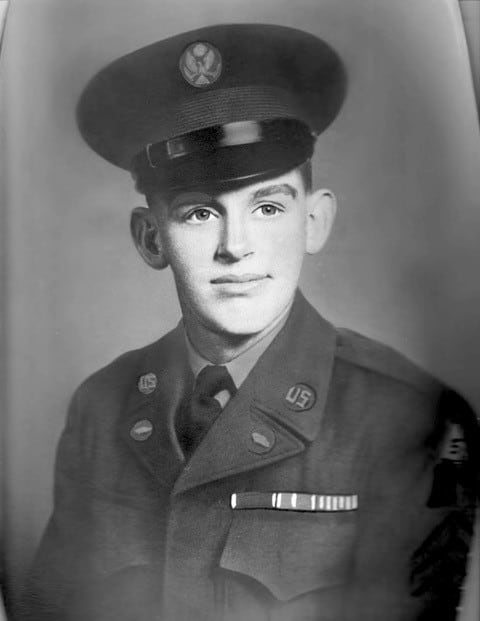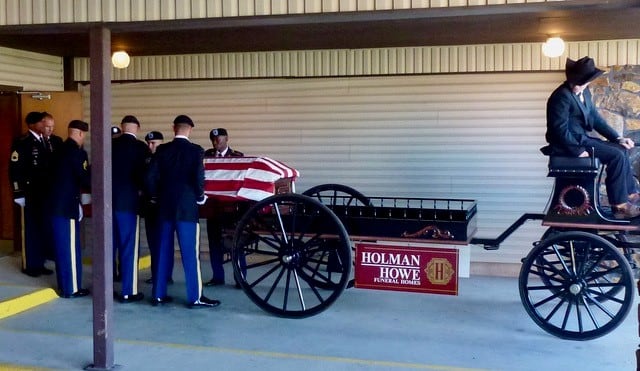Army Cpl. Donald Matney was only 18 years old when he disappeared from the frontlines during the Korean War. For decades Matney’s sisters kept pictures of their brother, wondering what had happened to him.
It was more than 65 years later that the son-in-law of one of Matney’s sisters saw the pictures they kept and became determined to find out what happened to their brother.
Tom Gormley and his wife set out on what became a nearly seven-year journey that took them to Korea, Japan, Washington D.C., and eventually all the way back to Matney’s hometown of Seymour, Mo.
That journey is chronicled in Gormley’s new book, “A Korean War Odyssey,” which intertwines their search for Matney with that of a fictional family of North Korean refugees and a brief history of the Korean War — a war sometimes referred to as “The Forgotten War.”
“The oldest sister, Anna, was the matriarch of the family,” Gormley recalled. “She got a letter every year from the government that said here’s what we’re doing trying to identify what happened to Uncle Donnie.”
Anna was never able to attend the missing in action updates in Washington D.C., but in 2010 she asked Gormley and his wife to go.

Gormley said it was there that he began to really get interested in the mystery. After speaking with the families of other soldiers who went missing in action during the Korean War, they met a man who kept a database of all prisoners of war and personnel from the war still missing in action.
“He thought that since Donnie didn’t appear on any of the POW reports, it was more than likely he had been killed and may have been recovered as an unknown soldier.”
Using their research on Matney and information available about unidentified remains recovered from Korea, they were able to narrow their search to a few graves and eventually to one, a burial site in the Punchbowl.
Officially referred to as the National Memorial Cemetery of the Pacific, Hawaii’s Punchbowl is the final resting place of almost 850 unidentified remains from the Korean War.
“At the time that we petitioned the Army to disinter this specific grave out of the Punchbowl, there was no process in place to do that,” Gormley said.
Once Gormley and his wife began the request for disinterment, it took nearly two-and-a-half years for the body to be removed.
“Uncle Donnie,” as Gormley refers to him, joined the U.S. Army at the age of 17 alongside his friend Charles Farr. Matney and Farr completed basic training and were sent to Japan together to perform occupational duties with the 19th Infantry Regiment, 24th Infantry Division.
This assignment was not a difficult one, Gormley said. “They didn’t have to do much because the Japanese did everything. Most of the time, it appears, from the folks we talked to, that they played a lot of games and didn’t do much training.”
That all changed when the 24th Infantry Division was the first to arrive in South Korea following the North Korean capture of Seoul.
By early July 1950, U.S. forces were engaged with soldiers from the North Korean People’s Army, and on July 13, fierce fighting took place along the Kum River. Matney and the other soldiers of the 24th Infantry Division faced off against a North Korean force that had them outnumbered and outgunned. NKPA forces had about 50 tanks; the 24th Infantry forces had none.
After days of being pushed back by the NKPA, the 24th Infantry made its final defense of the city of Taejon on July 19.
U.S. defensive lines were pushed back through the city street by street and house by house. By the end of the next day, the 24th Infantry Division was forced to retreat from Taejon.
Matney disappeared on July 20.
Farr, his friend from Missouri, was killed in action about a week later.
More than 7,800 American troops from the Korean War remain unaccounted for.
After the body was disinterred, it took three months to identify it. The formaldehyde used to preserve the body had made DNA testing impossible, so experts used Matney’s records instead.
Although many records were destroyed in the 1973 records fire in St. Louis, Matney’s medical records had survived, and experts were able to use enlistment x-rays screening for tuberculosis to confirm the body’s clavicle as an exact match to Matney’s.
After six-and-a-half decades, Uncle Donnie had been found.
Gormley worked to have Matney’s body brought back to Seymour and laid to rest next to his mother’s grave.

Two of Matney’s siblings were still alive at the time. “They were afraid, you know. There were a lot of stories from these times that the Americans were cowards and ran away in fear,” he recalled. “We were able to say this is what happened in these battles and it gave them closure.”
Gormley, who worked in telecom sales, said he knew next to nothing about the Korean War before his quest to find Uncle Donnie. His research took him around the world to Japan and Korea to get a better sense of what the war had been like.
“A Korean War Odyssey” is a unique account of the war for anyone interested in history, but it may particularly appeal to families of soldiers killed in action or missing in action, Gormley said.
The book includes information that might help those with a missing in action soldier in their own family find answers.
ForeWord Clarion Book Review called “A Korean War Odyssey” a “moving tribute” and “deft microhistory” of the war.
Harm Venhuizen is an editorial intern at Military Times. He is studying political science and philosophy at Calvin University, where he's also in the Army ROTC program.





